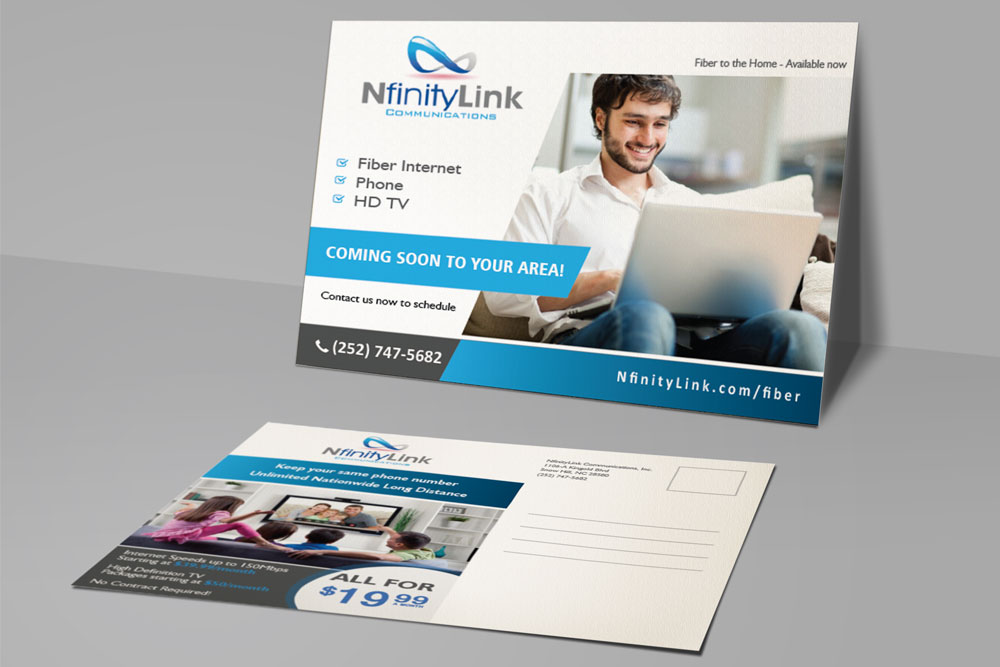Understanding Every Door Direct Mail (EDDM)
When you’re looking into your first (or maybe your 100th) direct mailing campaign, you’ve probably seen the acronym EDDM thrown around.
Believe it or not, you’ve been a recipient of an EDDM campaign. Next time you grab your mail, look at the mailing address. If you see something that says along the lines of “valued customer” or “postal customer” in the address box, that’s an EDDM campaign.
You probably matched the criteria the marketers were looking for in their campaign. But how did that postcard or letter end up in your mailbox and into your hands?
What is EDDM?
EDDM, or Every Door Direct Mail, is a service USPS provides and defines as:
“An affordable targeted advertising technique that lets you map your marketing mail audience by age, income, or household size. Simply identify the delivery routes you want to reach, prepare your mailpieces, drop off your mailpieces with us, and we’ll deliver the printed pieces to the active addresses in your designated area.”
In other words, when you use EDDM, you can select the postal route(s) that serve people who best fit your ideal customer/demographic for your mailer. You can also use EDDM to tailor your marketing materials to better connect with each route.
Why use EDDM?
There are many reasons why businesses choose to use EDDM, but the two which really push our clients to use it are inexpensiveness and not needing a mailing list.
The main reason for EDDM mailers being cheaper than standard mailing is that they can qualify for a lower per-piece rate than a standard postcard. The other part of why EDDM is cheaper is the lack of a mailing list. You do not have to spend the time or resources building a mailing list. It is still vital to pick your routes carefully, as ultimately the success of your campaign rides on where you send your piece.
EDDM Requirements
With EDDM, you cannot send anything you want the way you can with a normal direct mail send. All EDDM mailers are considered to be “flats,” meaning they must match one of the following criteria:
- Length greater than 10.5″
- Height of 6.125″
- Thickness of .25″
- Cannot exceed a weight of 3.3oz
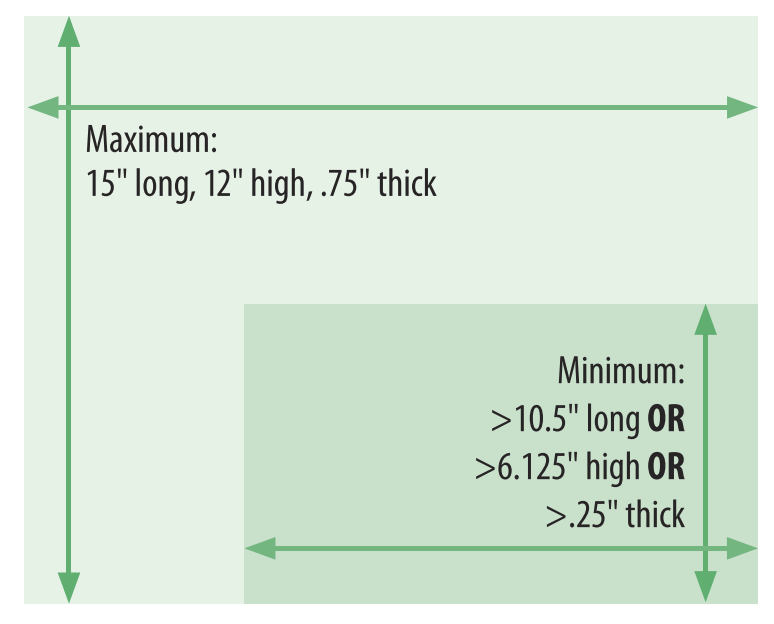
You as a designer or marketer have a lot to work with by using these specs from USPS. The most common EDDM print piece we print at our shop is a two-sided postcard. These are typically from local businesses promoting a sale, but we strongly recommend restaurants use EDDM as a primary marketing strategy. With these specs, you can send tri-fold menus to local residents as long as they fit the requirements.
The USPS requires all mail pieces to have the whole mailing label on the “top half” of the mailpiece. Orientation of the label (i.e., whether it is applied on the long or short side of the piece) does NOT matter. The top half of the piece will always be the shortest end. With us, we will always make sure this is squared away before we print your entire quantity. We’ve heard horror stories of people who didn’t comply with these rules and have gotten rejected after spending all that time and money designing the pieces.
USPS also has requirements on the quantities delivered to each route you choose. On an EDDM retail account, you can send at least 200 pieces per zip code and up to 5,000 per day. If you want to send more or less than that, you will have to be using an EDDM Business Mail Entry Unit (BMEU). These accounts have no limits on the amount you can send which makes them great for larger quantities.
Choosing A Mailing Route
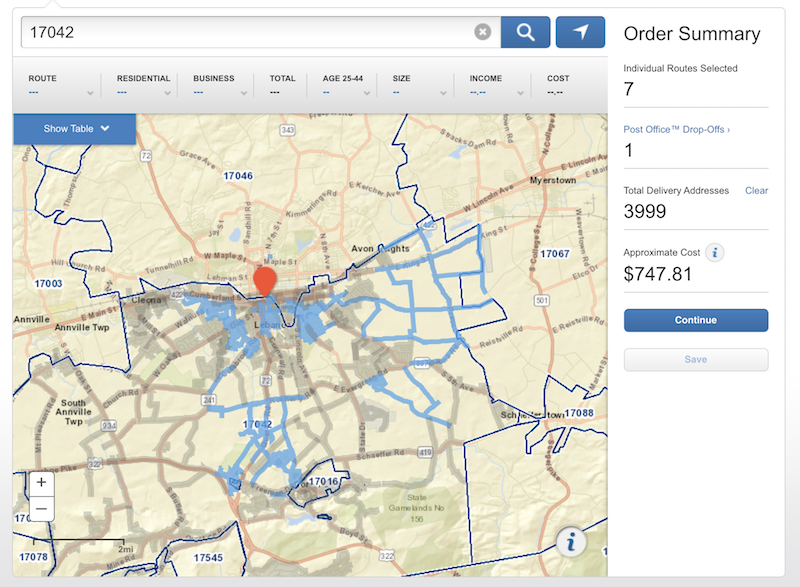
Once you have your creative designed, the most important part of your direct mail campaign is focusing on where you want to send your campaign. This is where the USPS Mapping Tool comes into play. With this tool, you are able to see specifically which routes are available in the zip codes you want to send to and a rough estimate of how much this is going to cost. This estimate doesn’t include the cost of printing your piece.
Within the wonderful mapping tool, you can select the route and address types. These allow you to narrow down your target audience within the geographical region.
Within the route options, you can choose from city, rural/highway, and PO box deliveries. These are pretty self-explanatory, but the difference between city and rural/highway routes is that the city route types lie only within city limits, and rural routes are outside of these limits.
The next part you can target is based on the “residential” criteria USPS provides. You can choose between residential and business addresses or both. This is great for both B2C and B2B businesses looking to use EDDM.
Once you have selected a route, you will be able to see all the information in a table. This graphic includes the percentage of the age range you selected, the median income, and the household size.
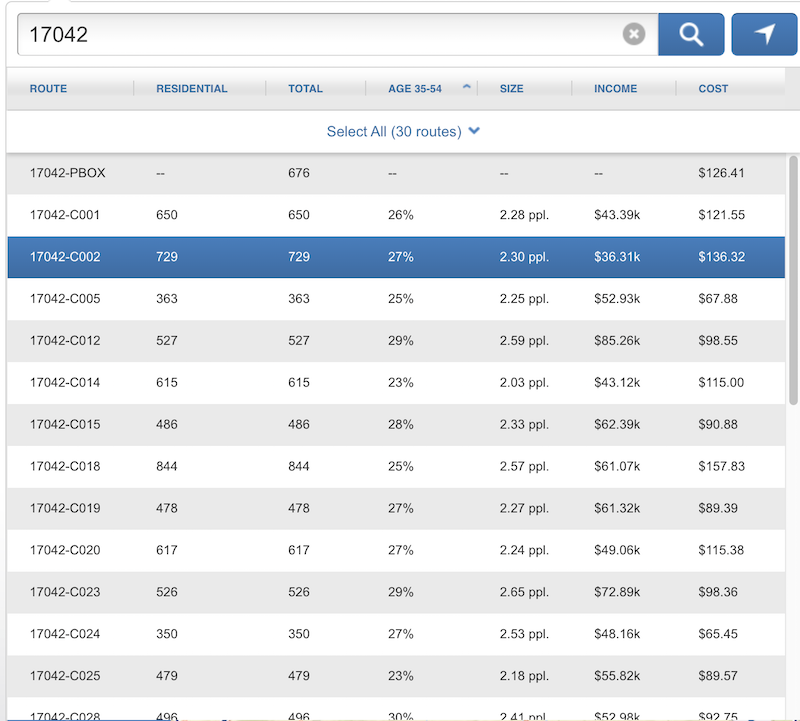
We recommend playing around with the routes to find out where would be best to send your campaign. Our direct mail marketing experts also suggest creating a customer profile for your campaign so you don’t waste any of your precious budgets.
EDDM Ideas for Your Business
Restaurants
The restaurants that have printed and mailed with us have had great returns. With the sizes you can send through EDDM, we’ve had some clients send tri-fold menus to specific routes within their towns. A more popular method is sending coupons and promotions to residents on a monthly basis. We always recommend doing at least some form of direct mail to all of our restaurant clients. A study done by IWCO Direct shows direct mail generates 2 to 6 times more responses than all digital channels combined. In other words, a menu sent through the mail will garner more attention — and more revenue — than an email or text.
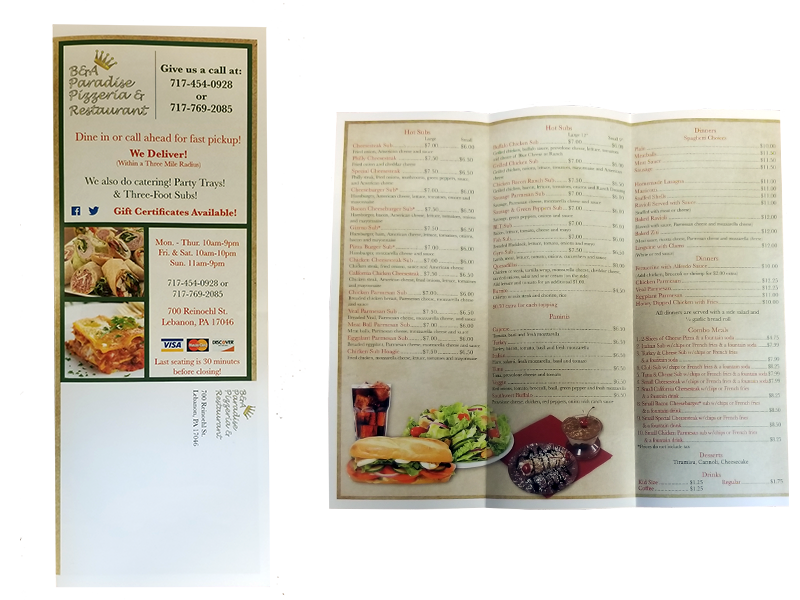
Real Estate
Real estate agents have been one industry we’ve seen ramp up their marketing efforts to include using every-door direct mailings. Why? They can target specific neighborhoods they aren’t currently in. They can position themselves as the person to go to if the homeowner is looking to sell or buy a house. We’ve also seen realtors promote open houses to areas they know are rented out.

Small Business
Small businesses can really benefit from using every door direct mail. It is often the first direct mail many mom-and-pop shops use as they can saturate the local market for a relatively low cost. We’ve seen retail stores promote their grand openings and promotions this way for years. Where small businesses really see the power of EDDM is when they incorporate it with other marketing initiatives. The Little Book of Bigger Returns found that mail boosted ROI by 20% when it was part of an integrated campaign. 